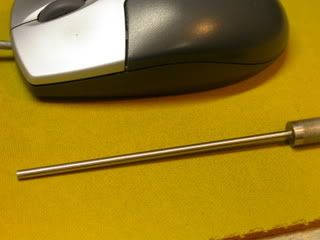hi guys
I'm trying to find a way to finish a long part made out of titanium. It's .250 +0/-.005 for 9.81" and there is a .175 gun drill bore through most of the material.
I found a Brown & Sharpe roller support box tool holder and I'm going to set it up for some test cuts tomorrow morning. Is there anything special about setting up one of these tools?
For my first test cut, I placed a pin in the collet of the lathe and brought the tool over the pin, then I brought up the rollers until they spin. I'm going to set the box tool on the pin then give it a go on the part.
What depth of cut would you recommend for this tool?
I'm trying to find a way to finish a long part made out of titanium. It's .250 +0/-.005 for 9.81" and there is a .175 gun drill bore through most of the material.
I found a Brown & Sharpe roller support box tool holder and I'm going to set it up for some test cuts tomorrow morning. Is there anything special about setting up one of these tools?
For my first test cut, I placed a pin in the collet of the lathe and brought the tool over the pin, then I brought up the rollers until they spin. I'm going to set the box tool on the pin then give it a go on the part.
What depth of cut would you recommend for this tool?





